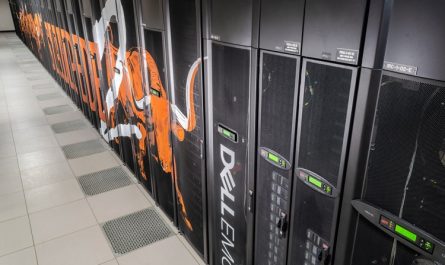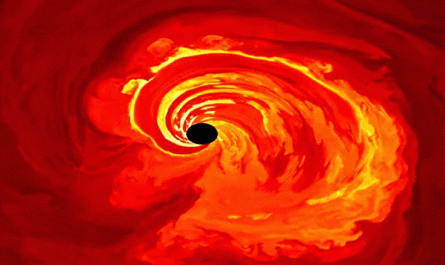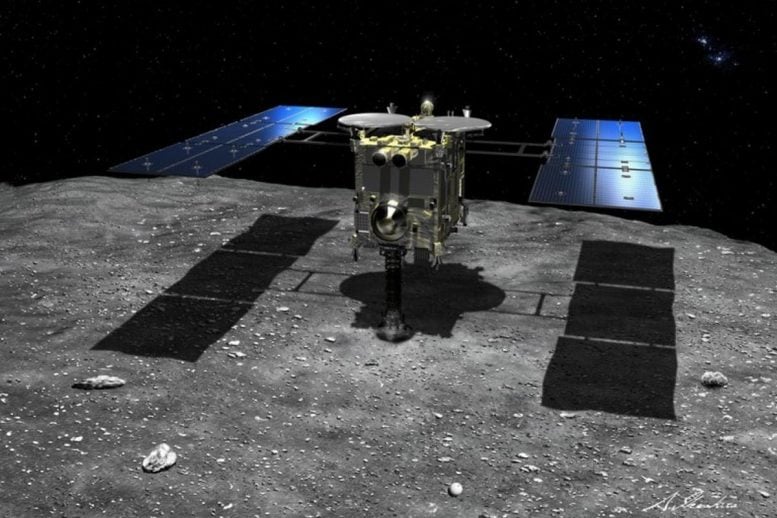
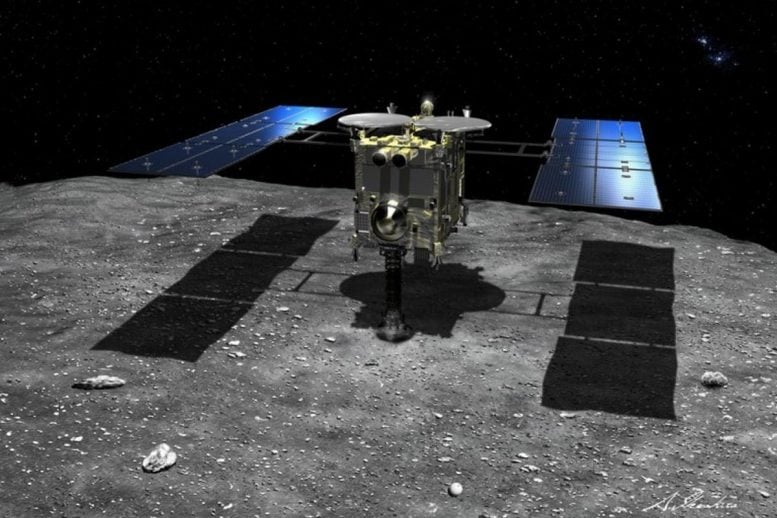
A recent study on asteroid Ryugu’s samples, brought back by Hayabusa2, offers new understanding of early solar system materials, challenging previous beliefs about asteroid compositions and the impact of Earth’s atmosphere on meteorites. (Japan’s Hayabusa2 mission to asteroid Ryugu.) Credit: JAXA
A groundbreaking study conducted by a team of international scientists has unveiled unprecedented insights into the nature of the asteroid Ryugu and shed light on the composition of water- and carbon-rich small bodies in the solar system.
Early Solar System Windows
Asteroids like Ryugu are remnants of planetary embryos that never reached larger sizes, making them invaluable windows into materials that formed in the early solar system. The study centered on laboratory measurements of the samples brought back to the Earth by the Hayabusa2 spacecraft in 2020. Led by the Japan Aerospace Exploration Agency (JAXA), Hayabusa2 aimed to uncover the true nature of Ryugu and explore how astrologists can use knowledge from meteorites to interpret telescopic observations of other hydrous asteroids.
Unlike meteorites derived from similar hydrous asteroids, the Ryugu samples avoided terrestrial alteration — the interaction with oxygen and water in the Earth’s atmosphere.
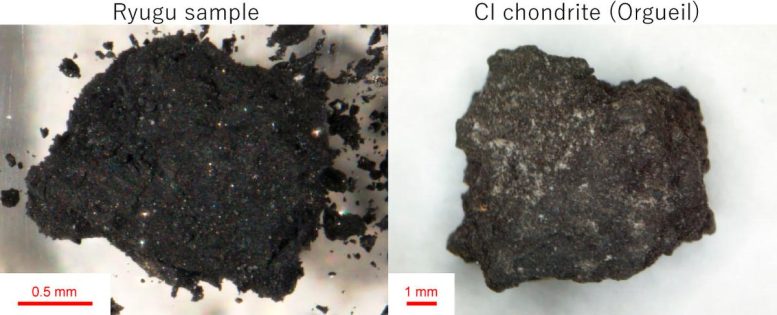
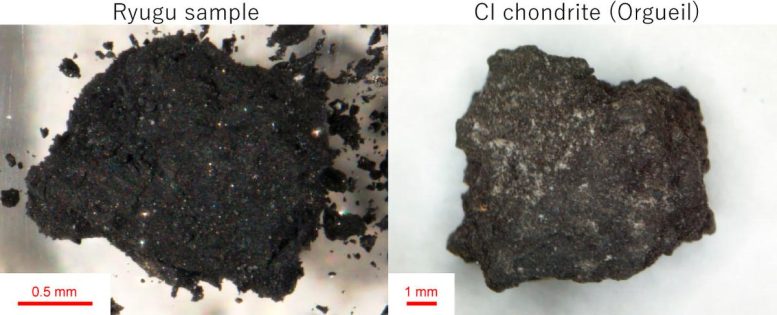
Optical images of the Ryugu sample (left) and the CI chondrite (Orgueil ; right). Credit: JAXA and Kana Amano et al.
Reflectance spectroscopy, a primary technique linking laboratory analyses of meteorites to asteroid observations, was employed to compare fresh Ryugu samples with meteorites altered in terrestrial environments. The team successfully developed analytical procedures that avoided exposing the samples to Earth’s atmosphere, ensuring the preservation of their original conditions.
Challenging Previous Assumptions
Previous studies suggested that Ryugu’s sample mineralogy resembled CI chondrites, the most primitive meteorites chemically. However, other studies have contradicted this by revealing a significant difference in reflectance spectra between Ryugu samples and CI chondrites. Further investigations in the new study indicated that heating CI samples under reducing conditions at 300 °C reproduced Ryugu’s sample mineralogy well, resulting in spectra closely matching those of Ryugu samples.
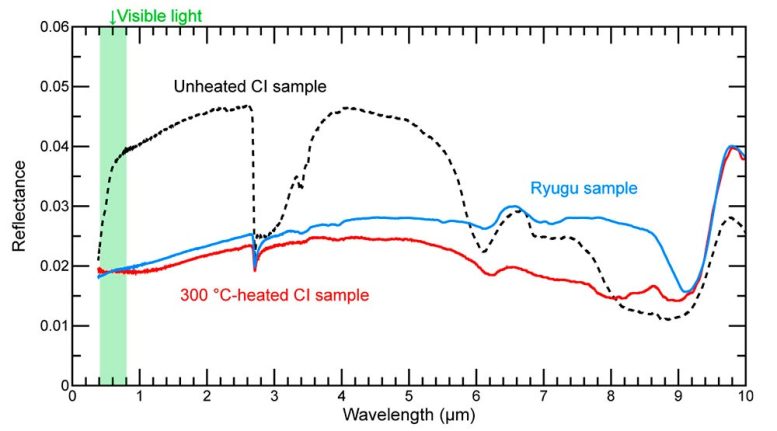
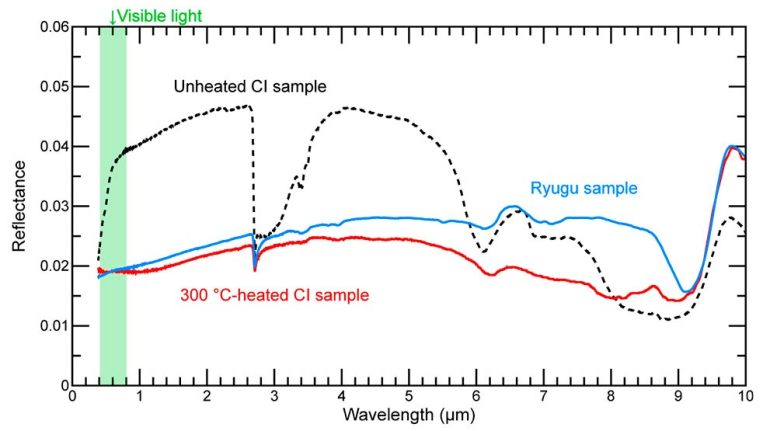
The reflectance spectra of Ryugu sample (blue line), unheated CI sample (black, dotted line), and the CI sample heated at 300 °C. Modified from Figure 5A in Amano et al. (2023). Credit: Kana Amano et al.
The findings challenge previous assumptions about the parent bodies of CI chondrites and underscore the susceptibility of primitive meteorite spectra to terrestrial weathering. The study suggests that actual CI chondrite parent bodies likely exhibit darker and flatter reflectance spectra than previously thought.
Advancing Solar System Knowledge
“This study opens new avenues for understanding the composition and evolution of small bodies in our solar system. By considering the impact of terrestrial weathering on meteorites, we can refine our interpretations of asteroid compositions and advance our knowledge of the solar system’s early history,” said Kana Amano, a former PhD student at the early Solar System evolution Research Group at Tohoku University and co-author of the paper.
Details of Amano and her colleagues’ findings were published in the journal Science Advances on December 6, 2023.
Reference: “Reassigning CI chondrite parent bodies based on reflectance spectroscopy of samples from carbonaceous asteroid Ryugu and meteorites” by Kana Amano, Moe Matsuoka, Tomoki Nakamura, Eiichi Kagawa, Yuri Fujioka, Sandra M. Potin, Takahiro Hiroi, Eri Tatsumi, Ralph E. Milliken, Eric Quirico, Pierre Beck, Rosario Brunetto, Masayuki Uesugi, Yoshio Takahashi, Takahiro Kawai, Shohei Yamashita, Yuma Enokido, Taiga Wada, Yoshihiro Furukawa, Michael E. Zolensky, Driss Takir, Deborah L. Domingue, Camilo Jaramillo-Correa, Faith Vilas, Amanda R. Hendrix, Mizuha Kikuiri, Tomoyo Morita, Hisayoshi Yurimoto, Takaaki Noguchi, Ryuji Okazaki, Hikaru Yabuta, Hiroshi Naraoka, Kanako Sakamoto, Shogo Tachibana, Toru Yada, Masahiro Nishimura, Aiko Nakato, Akiko Miyazaki, Kasumi Yogata, Masanao Abe, Tatsuaki Okada, Tomohiro Usui, Makoto Yoshikawa, Takanao Saiki, Satoshi Tanaka, Fuyuto Terui, Satoru Nakazawa, Sei-ichiro Watanabe and Yuichi Tsuda, 6 December 2023, Science Advances.
DOI: 10.1126/sciadv.adi3789

